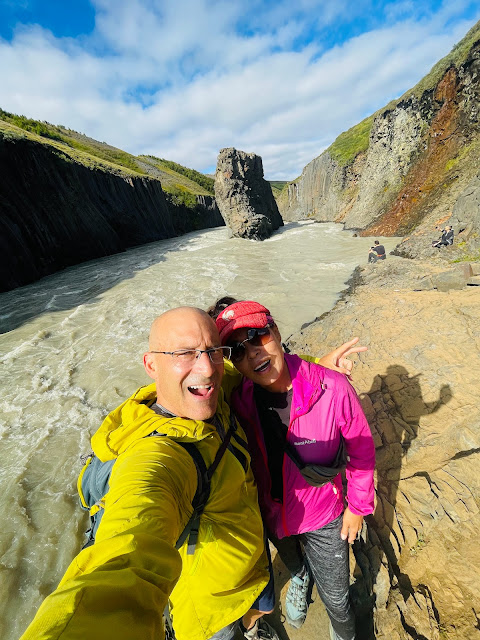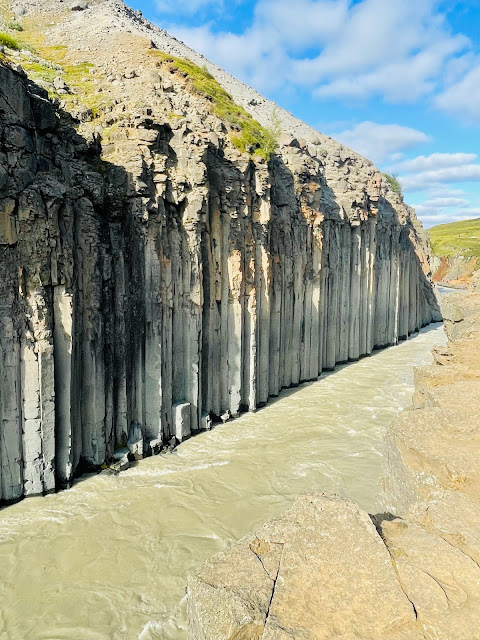August 11: Studiagil
After almost 48 hours, we finally arrived in Iceland! The quaint port city of Seydisfjördur was bustling with tourists as they visited bars, cafes and restaurants. Others strolled along the road as they got a glimpse of the unique landscape and abundant number of waterfalls.
Our first destination was Basalt Canyon. This location claims to have the highest number of basalt columns in Iceland. The hard rushing glacier river was slate gray today — it reminded me of the color of water from the Narrows at Zion and Snake Canyon in Oman. Although we were expecting to see turquoise glacier waters, we instead were greeted by a slate gray color resembling wet concrete. Upon further research, we learned, “The color of the water tends to change depending on the season. From March to July, the water has a beautiful blue-green color, but as the meltwater from nearby glaciers rises towards the end of summer, the color turns to a light gray, which is distinctive for glacial rivers.” The short trek was filled with beautiful views of the canyon walls, which were a geologist's dream with columns of rock practically showing the passing of time.
Basalt Canyon, or Stuðlagil as it’s known in Icelandic, wasn’t always accessible or even visible to the public. For centuries, the powerful Jökla River raged through the canyon, hiding its stunning basalt columns beneath the water. It wasn’t until the construction of the Kárahnjúkar Hydropower Plant in 2007, which diverted much of the river’s flow, that the water levels dropped significantly — revealing one of the largest collections of basalt columns in Iceland. This geological wonder was formed by ancient volcanic activity, where slow-cooling lava created the towering hexagonal rock formations we see today. Walking through the canyon felt like stepping into a newly discovered natural treasure, with every column telling a story of the island’s volcanic past.












Comments
Post a Comment